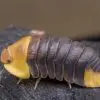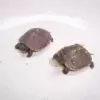Blue Tongue Lizards
$300.00 Original price was: $300.00.$250.00Current price is: $250.00.
Blue Tongue Lizard for Sale:
Blue Tongue Lizard At Reptile Base We are devoted to our animals and we are committed to finding owners the ideal pet and providing our customers with the best assistance, advice, and a variety of products. We do this to make sure our animals get the best start possible in their new home.
Pet Blue Tongue Lizard:
Are you in search of Blue Tongues to buy in Sydney?
Our Blue tongue Lizards are covere by a 14-day health guarantee. As well as, a seven-day cooling-off period as part of our normal policies and procedures. The purchase of the blue Tongue within NSW requires that you have an active reptile keepers license.
Kellyville Pets is one of the longest-running and largest reptile stores in Sydney and boasts a vast selection of native reptiles that are available. We are able to accommodate beginners, reptile keepers, to more experienced reptile lovers. Our reptile house carryEastern blue tongue skink for sale (Scincoides Tiliqua) (with variations that include Albino, melanistic.
Quick facts:
At only 15cm in length, at just 15cm long, the Pygmy Blue Tongue is the smallest blue-tongued lizard size. It is only found in a handful of locations within South Australia and lives in pits in the ground create through Trapdoor Spiders.
Blue-tongue lizards last for over 20 years, and they can grow to over 50 cm in height. The majority of Shinglebacks share the same mate throughout all of their existence.
Blue-tongued Lizard The complete story:
Australia hosts six different species of lizard’s tongue, and they can grow up to 60 centimeters long. They’re typically grey with wide brown stripes on their tail and back, and, of course, the most distinctive characteristic is the blue-tongued lizard’s tongue.
The first signs of the blue-tongues of spring are when they start to emerge from their winter residences to search for new mates. They are active only in the day, which makes them easy to identify.
The reason they have blue tongues is that they can show them when they are threatened, and deter predators. Bright colors in nature could mean the threat of poison. Blue tongues can make loud sounds of hissing and growl in anger in order to ward off dangers. Blue-tongues are stout and are not able to run away from predators. so the use of scare tactics is its primary defense. Another method it employs is its strong bite and the habit of never giving up.
Be the first to review “Blue Tongue Lizards” Cancel reply
Related products
tortis
tortis
tortis
tortis
tortis
tortis
tortis













Reviews
There are no reviews yet.